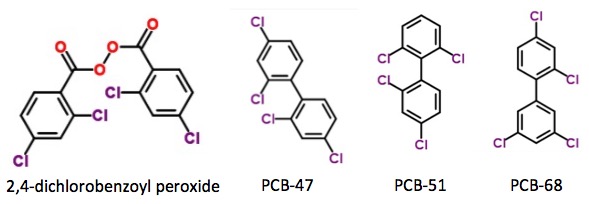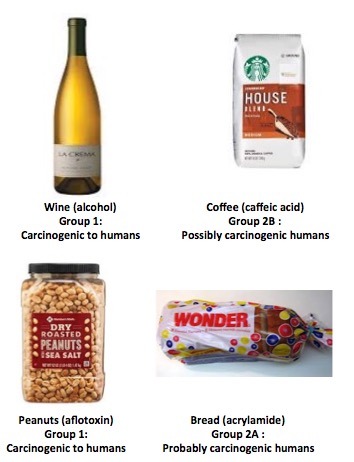A study that was just published in Environmental Science and Technology claims that PCBs (polychlorinated biphenyls) are a significant contributor to indoor air pollution because the chemicals are emitted from kitchen cabinets. Chemically, this is plausible because a chemical called 2,4-dichlorobenzoyl peroxide, which is used in the manufacture of sealants, can indeed decompose to give a mixture of polychlorobiphenyls (PCBs) (1) (Figure 1). Since PCBs are considered to be carcinogens in rats, this raises a cancer scare in humans. But is it really something to worry about?
PCBs ARE OMNIPRESENT
Nicholas J. Herkert and colleagues at Department of Civil and Environmental Engineering, IIHR-Hydroscience and Engineering and The University of Iowa collected air samples in 16 homes in the Iowa City area using passive air samplers and then analyzed the air for PCB concentration by separating and analyzing them using a very powerful analytical method called GC-MS/MS. GC is short for gas chromatography, the method that separates the mixture of PCBs into their pure components. MS is short for mass spectrometry, which is used to determine the molecular weight of the chemical. MS/MS refers to a newer technique called tandem mass spectrometry, an even more powerful method of determining chemical structures.

Figure 1. Tetrachlorobiphenyls detected in homes are formed by decomposition of 2,4-dichlorobenzoyl peroxide.
PCBs were found virtually everywhere, in varying concentrations, even outside. Here are average concentrations of all PCBs taken together:
Outside: 142 picograms per cubic liter (PCL) of air (0.000000000142 grams)
Inside: 2830 PCL (0.00000000283 grams)
Schools * 194,000 PCL (0.000194 grams) *literature value
WHAT IS THE RISK?
The inside concentration, 2,830 PCL is a very small number, however, the authors write that they measured "much higher levels than expected," and that "It is difficult to address the direct potential effects of these potent neurotoxic congeners in the context of our study as we do not yet fully understand the fate and toxicities of inhaled PCBs."
So, it is impossible to know whether these levels of PCBs are a real threat or merely a scare. My bet is on the latter. We are bathed in thousands of trace chemicals every day, yet we're still here to study them. So, although the science behind these experiments was state-of-the-art, there is no conclusion. There can't be.
Perhaps more interesting... let's take a look at a few items that might be found inside the cabinets (2):
Final advice:
Sit back, relax, enjoy a cup of nothing.
Yep, we're all going to die.
NOTES:
(1) PCBs became infamous after General Electric dumped 1.3 million pounds of the chemicals into the Hudson River in upstate New York between 1947-1977. PCBs are insoluble in water, soluble in oil and very resistant to degradation and metabolism. This causes them to bioaccumulate, so they can persist for many years.
(2) The ratings are from International Agency for Research on Cancer (IARC), which is part of the World Health Organization. While IARC used to be dedicated to doing pretty good science, it is now a bunch of flipped out dudes. IARC has plutonium and bacon BOTH in Group 1 - the category with worst cancer risk. Uh huh.

IARC member? Image: HalloweenCostumes.com




